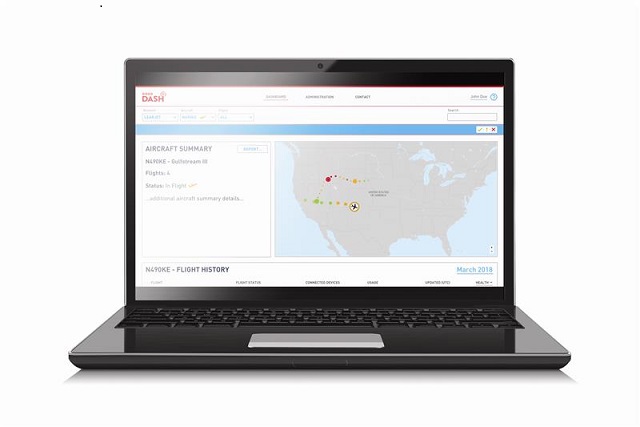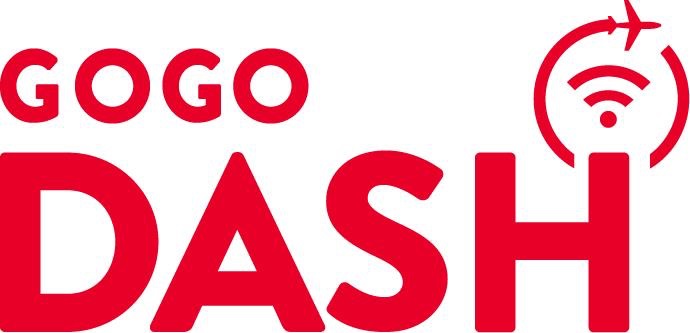Click Here to View This Page on Production Frontend
Click Here to Export Node Content
Click Here to View Printer-Friendly Version (Raw Backend)
Note: front-end display has links to styled print versions.
Content Node ID: 404874
While Gogo’s in-flight internet service enjoys a 98 percent service-availability rate with nearly nonstop connectivity throughout the United States and portions of Canada and Alaska, there are rare times when a passenger’s onboard equipment has an issue or the network is momentarily unavailable. Whether it’s ensuring the CEO can make that video conference call at 35,000 feet or keeping the kids connected to their social media accounts or online video services, Gogo has built the tools that business jet operators need to quickly assess and fix any interruptions in connectivity while the aircraft is still in the air.
“Internet is becoming such an integral part of the flight that some missions won’t launch if it isn’t offered,” said Gogo senior VP of customer operations David Glenn. “Air-to-ground (ATG) connectivity is now part of the aircraft’s ecosystem, and the aircraft operator needs to know if something’s not working properly.”

DASH Can Help
That’s where Gogo DASH comes in. Launched in 2019, DASH provides a comprehensive self-service toolkit that allows operators to view and manage connectivity for a single aircraft or across their fleet from a web-based application. A flight department dispatcher can monitor in-flight internet connectivity from the ground; determine how many devices are connected to the aircraft’s Wi-Fi network; manage preferences for network access and speed; and quickly diagnose, troubleshoot, and resolve connectivity issues. The DASH mobile app provides similar insights to inflight personnel onboard the aircraft.
“At Gogo, we focus on providing proactive support with a personal touch enhanced by technology,” said Glenn. “The whole concept of DASH is to provide more self-service capabilities to our customers so they understand how their system is performing and can reach support more quickly if needed.”
Connectivity insights delivered by Gogo DASH concern network activity, performance, amount of data, and connected devices. A simple red/yellow/green indicator provides instantaneous status information for each configured network. With DASH, if passengers alert the crew that they cannot connect to the internet, either the crew or operations personnel can determine at a glance whether it’s a problem with the network or with individual devices.
“While customers are on our network, the system sends back a heartbeat every five minutes,” said Glenn. “That tells us how the system is working during a flight and allows DASH users to see network status and which devices are connected onboard.”
DASH also allows flight departments to do some of their own diagnostics and troubleshooting.
“When we rolled out the ground-based DASH, our trouble ticket rate dropped 40 percent,” Glenn said. “Many of the questions we’re asked are about ‘How do I?’. ‘How do I upload movies?’, ‘How do I connect a device?’. DASH enables people to self-serve with some of those questions and gives them a near real-time view of how the system’s working. In the past we’ve had people call and say something wasn’t working when maybe four people had their devices connected properly and one didn’t, and it was how they had attempted to connect that was causing the issue not the system itself. DASH shows that and it helps us understand the issue.”
While the DASH interface uses simple indicators for system status, the Gogo engineers can see the actual ranges for throughput, speed, and more technical system indicators. More importantly, the system now automatically generates trouble tickets for specific aircraft when it detects certain parameters.
“The best thing is for the system to never break, but the next best thing is to be able to tell customers that you discovered and fixed the problem before they even knew about it,” Glenn said. “With Gogo AVANCE and our Business Systems Gateway, it allows the aircraft platform to interface with our ground-based system, which tracks thousands of messages per hour and pings tech support when an aircraft generates a certain type or number of critical messages.”
Sometimes this heads-up to tech support results in fixing a system that the customer didn’t even know was broken.
“We had one customer where we saw that one of the two aircards on the aircraft weren’t operational,” said Glenn. “So the system was working, but it wasn’t working at optimal levels. We called the customer and arranged to swap out the unit when it was most convenient for them, and now the performance is back to normal and data usage on the aircraft has greatly increased.”
Gogo DASH is already available to Gogo Business Aviation customers using an AVANCE system. Customers can request a login using the DASH login prompt at business.gogoair.com or download the mobile app through the Apple Store or Google Play Store.
In the MIX
Accessed through Gogo DASH, the Gogo MIX application provides additional control over the aircraft’s Wi-Fi access and usage. Customers can create and manage network configurations, view status reports and network history, and assign priority access to mission-critical personnel onboard the aircraft through Gogo MIX.
For a corporate flight department, this might be a “set and forget” customization. Operations can use Gogo MIX to set up two onboard Wi-Fi networks—one for the VIP and one for the remaining passengers and crew—with different passwords for each network. The speed and capabilities can be set for each network – up to six hotspots – providing priority access and the greatest amount of bandwidth to the VIP.
Charter operators and aircraft management companies might also set up two networks, one with streaming capability and one for email/text only. Or, because Gogo MIX is quick and easy to use, they might simply set the level of access and capability for a single network based on that flight’s customer agreement. They can also set up one network dedicated solely to Gogo Vision.
“Gogo MIX allows customers to control their in-flight internet costs by controlling access, speed, and usage on a per-flight basis,” said Glenn. “Different charter operators monetize it differently, but generally they are able to change the internet experience of the folks in the cabin on a per-flight basis, depending on what their expectation is and what they’ve paid for.”
